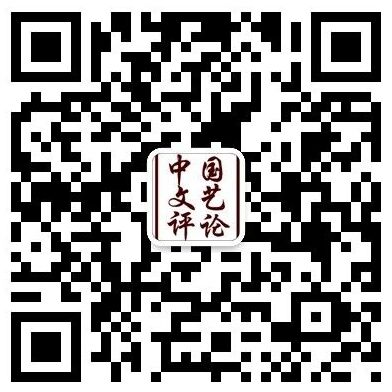
Hot Spot Observations •Opportunities and Challenges for Literary Development in the Age of AI (I)
■ Exploring the Issues of Public Interpretation with AI Algorithms (PP. 4–16)Zhuo Jin
Abstract: Generative artificial intelligence (AI) inevitably has the output of concepts and values, so "AI speaks human language" is actually a matter of hermeneutics. The algorithm of the generalized AI macro-language model consists of a series of procedures such as model training, data bank, data annotator, multimodal illusion detection, PPO algorithm, etc. The question-and-answer process between the user and the AI has become an emerging hermeneutical phenomenon that is different from human hermeneutics. Examining the ways in which AI speaks helps to supervise AI development at the methodological, value and ethical levels. AI is not yet an individual with independent consciousness, and human beings can still control its speech behavior. With the huge emergence of large language models, however, the chain of AI thinking is constantly approaching the human brain. It is therefore necessary to discuss the relationship between "AI interpretation" and "human interpretation" to ensure a healthy interaction between the two types of public interpretation. While fully utilizing AI, it is necessary to protect human subjectivity and initiative.
Keywords: AI algorithms, public interpretation, AI interpretation, digital humanity
■ AI Creation:Impact and Reshaping of Traditional Literary and Artistic Creation Models (PP. 17–31)Jian Shengyu
Abstract: As a new cultural phenomenon in the digital age, "AI creation" is worth studying from its application methods, existing problems, and reference significance. The empowerment of artificial intelligence in literary and artistic creation makes it possible for humans and machines to borrow from each other's perspectives. Especially with its significant advantages in massive data utilization, efficient collaboration, creative inspiration, and simulation style, generative artificial intelligence technology can bring significant assistance to literary and artistic creation. However, there is also a lack of originality in AI creation, as deep creativity needs to be nurtured by life experience, and artificial intelligence lacks self-awareness and experience gained through firsthand experience. The shortcomings of AI creation also make us reflect on the inherent problems of literary and artistic creation, allowing creation to return to sincerity and original intention.
Keywords: AI creation, borrowing perspectives, co-creativity, deep creativity
■ Interaction, Embedding and Posthumanism:The Innovation of Image Generation through Generative AI (PP.32–45)Chen Luming and Zhang Xu
Abstract: The development of generative AI has spawned entirely new operational models across various sectors of society. Leveraging massive databases, generative AI, through long-term training, is capable of autonomously generating image texts that closely resemble human creativity. This development undoubtedly challenges human subjectivity and represents a disruptive innovation in film creation. The integration of generative AI with other internet products has formed an embedded "APP+" model, producing a "1+1>2" effect. In the future, the biological transformation of "human+GPT" is foreseeable, enhancing the omnipotence of image creation. As humanity progresses toward the posthuman stage, efforts are being made to employ film texts to conduct scientific explorations of the future, carrying out transcendental experiments on posthuman imagery within the realm of film. This process involves scientific and rational prediction of the future trajectory of human development, giving rise to bold imaginations regarding the innovation of image generation through generative AI.
Keywords: generative AI, database cinema, image, plugin, posthuman
Thematic Planning •Theory and Practice of Constructing China's Independent Discourse of Literature and Art Criticism (III)
■ Innovation in Inheritance:Reflections on the Construction of the Discursive System of Contemporary Art Criticism (PP. 46–59)Huang Zongxian
Abstract: The Third Plenary Session of the 20th CPC Central Committee explicitly proposed the construction of an autonomous knowledge system for China's philosophical and social sciences. How to construct a discursive system of art criticism, including fine arts, has inevitably become a topic of the times that will be and must be answered by China's art circles. This article focuses on discussing this issue from the three aspects of theoretical thinking, historical lineage and innovative dimension in constructing the discursive system of contemporary Chinese art criticism. The author argues that an innovative and independent discursive system for art criticism is an important part of constructing a contemporary Chinese-style art system. The traditional context lineage of art theory and criticism as a whole is an indispensable resource and reference for the innovation of fine art theory and discursive system. Under the premise of clear value orientation, we should inherit the Chinese tradition. Also, based on Chinese practice, we should consolidate Chinese experience, confront Chinese reality, and face the world and the future. It is necessary to create a self-contained discursive system of contemporary Chinese art criticism that embodies the value aspirations, spiritual concepts, ways of thinking, artistic historical viewpoints, and expression paradigms of the main body of the discourse. It is the embodiment of the spirit of cultural self-improvement, and also the academic responsibility and mission of the times that Chinese art theorists and critics should take on from the perspective of the mutual learning of civilizations.
Keywords: art criticism, Chinese characteristics, discursive system
■ The Influence of Traditional Culture on the Independent Discursive System of Chinese Literary Criticism:A Study of the Evolution from the "May Fourth" Movement to the "Talks at the Yan'an Forum on Literature and Art"(PP. 60–72)Wang Tingxin
Abstract: To investigate the construction of the independent discursive system of Chinese literary and art criticism, we should first start from the dimensions of history and culture. The independence of culture determines the independence of the construction of the discursive system of literary criticism, and the formation of cultural independence cannot be detached from the specific historical context. From the May Fourth New Culture Movement to Mao Zedong's "Talks at the Yan'an Forum on Literature and Art", the period went through such important historical stages as the overthrow of the Beiyang Warlord's rule, the upsurge and turnaround of the National Revolution, and the outbreak of the War of Resistance against Japan. The literary and artistic movement under the leadership of the Communist Party of China (CPC) also played an important role in it. The "Talks at the Yan'an Forum on Literature and Art" marked the establishment of the CPC's stance, attitude and approach towards literature and art. And in the context of the War of Resistance against Japan, the view of literature and art that emphasized national cultural self-confidence and was based on the roots of Chinese culture and the actuality of the Chinese revolution also became increasingly prominent in the process. This view of literature and art had a powerful influence on the construction of the independent discursive system of literary criticism under the leadership of the CPC in a specific historical period. Studying this period of history has an important reference value for us to think about the construction of the autonomous discursive system for Chinese literary and art criticism in the new era.
Keywords: May Fourth New Culture Movement, the War of Resistance against Japan, the forum on literature and art, traditional culture, independent discursive system of literary and art criticism
■ The Three Dimensions of Constructing the Discursive System of Chinese Drama Criticism (PP. 73–81)Chen Jide
Abstract: Constructing China's independent discursive system of drama criticism should grasp the three dimensions of tradition, world and reality. The traditional dimension refers to returning to history and actively integrating into the development of Chinese culture. The world dimension refers to learning from world drama and world literary theory from the perspective of Lu Xun's "grabbism" (nalai zhuyi). At the same time, we should also actively "go out", take the initiative to speak and actively appear on the international drama platform. The realistic dimension refers to creating new concepts and new categories, establishing a scientific evaluation system for drama works, broadening the transmission path and enhancing the transmission effect.
Keywords: discursive system of Chinese drama criticism, traditional dimension, world dimension, realistic dimension
A New Introduction to the History of Art
■ How Concept Became a Weapon:Theory of Photography as a Weapon and Its Practice under the Background of the Anti-Japanese National Salvation (PP. 82–94)Yan Aihua
Abstract: Theory of Photography as a Weapon,put forward against the backdrop of the anti-Japanese war, has gone through three stages: the early "National Defense Photography", Sha Fei's personal "theory of photography as a weapon" and after the publication of "Talks at the Yan'an Forum on Literature and Art", photography became a wartime literary and art policy of the Communist Party of China. As an important component of the "National Defense Literature and Art" proposed for the establishment of the "Anti-Japanese National United Front", the slogan of "National Defense Photography" not only continued the tradition of the "Weapon Theory" of the left-wing art movement but also reflected the actual situation where the Sino-Japanese national contradiction had risen to become the primary contradiction. After the outbreak of the full-scale war of resistance, Sha Fei transitioned from being an active practitioner of "National Defense Photography" to proposing a more explicit "theory of photography as a weapon", realizing a shift from exposing reality to promoting the national crisis. In 1942, after the publication of Mao Zedong's " Talks at the Yan'an Forum on Literature and Art", the "theory of photography as a weapon" rose from a personal theoretical proposition to become an important component of the Party's literary and art policy. Under the leadership of the Communist Party of China and various military regions, photographical work in the liberated areas was carried out in a planned and organized manner, forming a "cultural army". As a result, photography evolved from a "conceptual weapon" to a "realistic weapon".
Keywords: Anti-Japanese and national salvation, National Defense Photography, Theory of Photography as a Weapon, "Talks at the Yan'an Forum on Literature and Art"
Random Thoughts on Art
■ The Logical Pathway of New Quality Productive Forces and High-Quality Development of Art:Continuing from "Qian Xuesen's Concept" (PP. 95–105)Wang Yinan
Abstract: In the late 20th century, Qian Xuesen made extensive discussions on the relationship between art and technology, and various contemporary hotspots have proven the insightfulness of his judgments. Taking this as an opportunity to clarify the position and function of art in new quality productive forces has significant theoretical and practical value. The emergence of new quality productive forces constitutes the inherent requirement and critical fulcrum of high-quality development, presenting a significant juncture for the prosperity and innovation of artistic creation. Tracing the "Qian Xuesen's Vision", it becomes evident that the high-quality development of art serves as a vital driver of new quality productive forces, manifested in the stimulation of innovative potential, enhancement of laborers' quality, upgradation of means of labor, expansion of labor objects, and leapfrogging in their optimal integration. Conversely, new-form productivity also presents an opportunity for transformation and disruptive challenges to the high-quality development of art. It facilitates the renewal of artistic forms, challenges and expands the boundaries and methodologies of literary criticism, introduces "high-tech, high-efficiency, and high-quality" communication modes, becoming a cornerstone for nurturing high-quality artistic works. It also stimulates emerging consumption patterns in the arts, and promotes the transformation and upgrading of the artistic industry.
Keywords:new quality productive forces, high-quality development, "Qian Xuesen's Concept", art and technology, aesthetic education
Interview with Renowned Experts
■ Pioneering the Road of Constructing Aesthetics with Chinese Characteristics:An Interview with the Aesthetician Peng Lixun (PP. 106–120)Interviewed by Ren Jun

Inside Front Cover
Chinese Literary Critics: Wang Jie


Inside Back Cover
Call for Subscription of Magazine, Chinese Literature and Art Criticism in 2025

Back Cover
The Recommendation of Outstanding Literary and Art Critical Works for the 8th Woodpecker Cup of China Literary and Art Criticism:The History of Chinese Calligraphy Criticism: Modern



中国uedbet全球体育uedbet让所有玩家提款网

“中国uedbet全球体育uedbet让所有玩家提款”微信公号

“中国uedbet全球体育uedbet让所有玩家提款”视频号